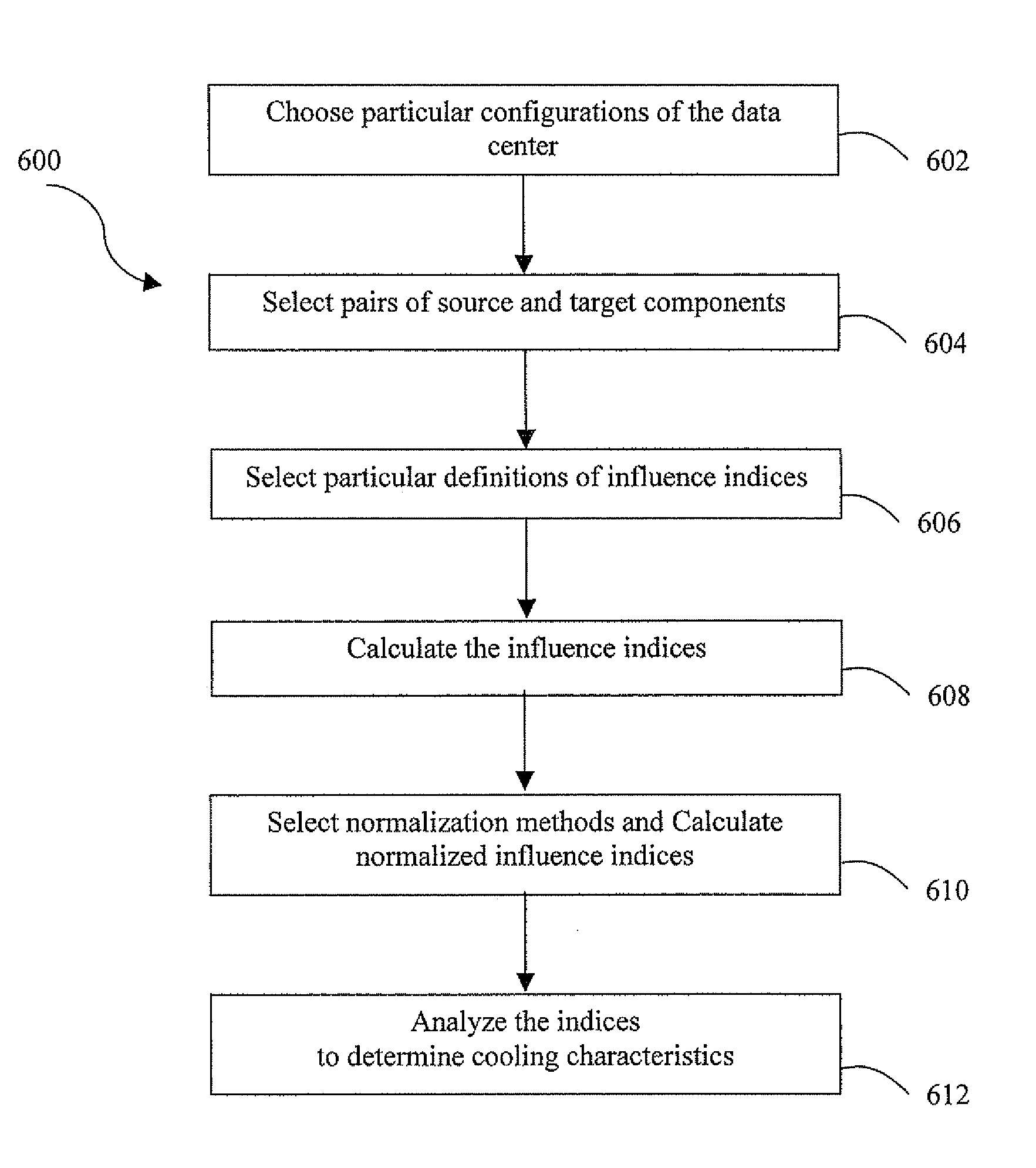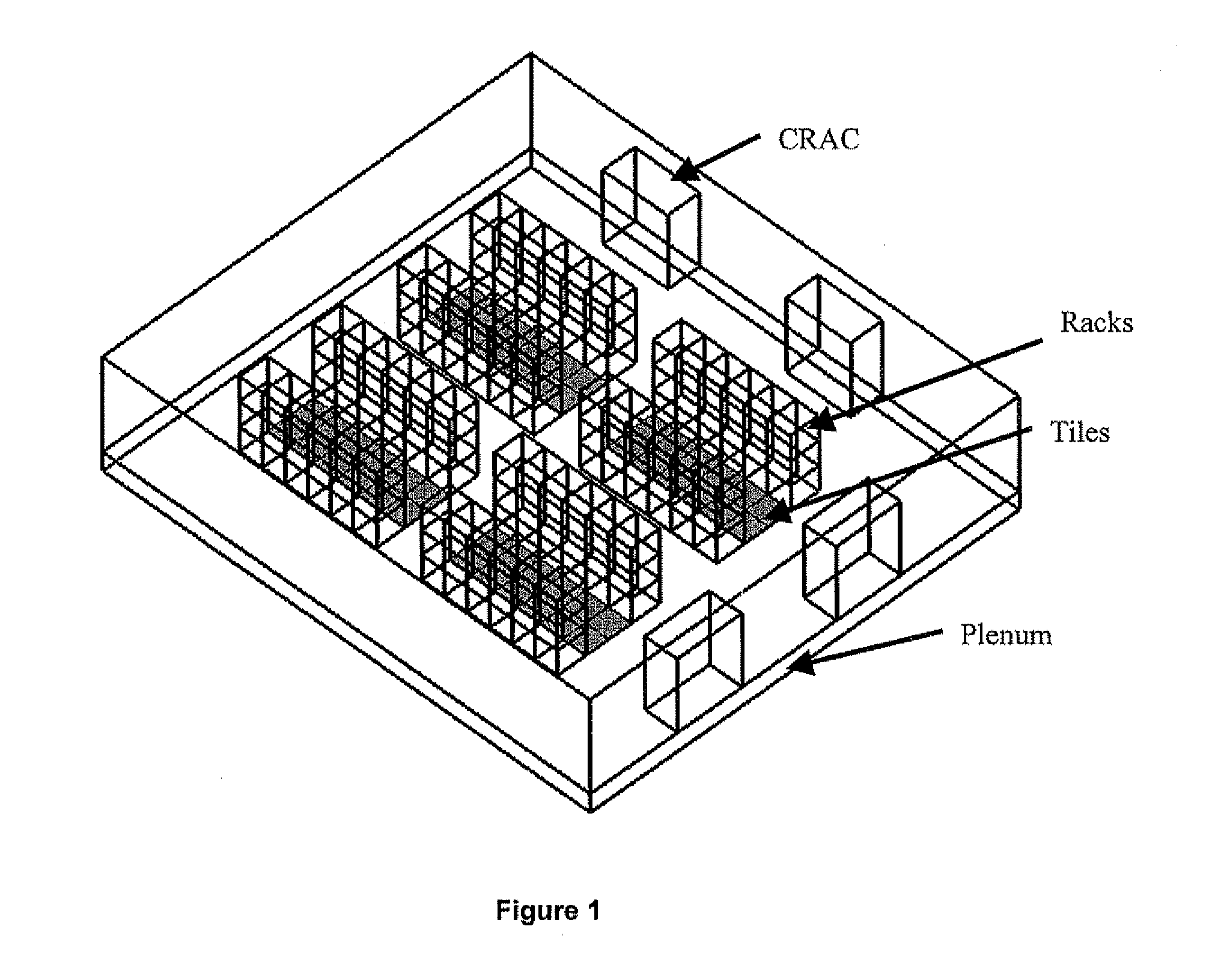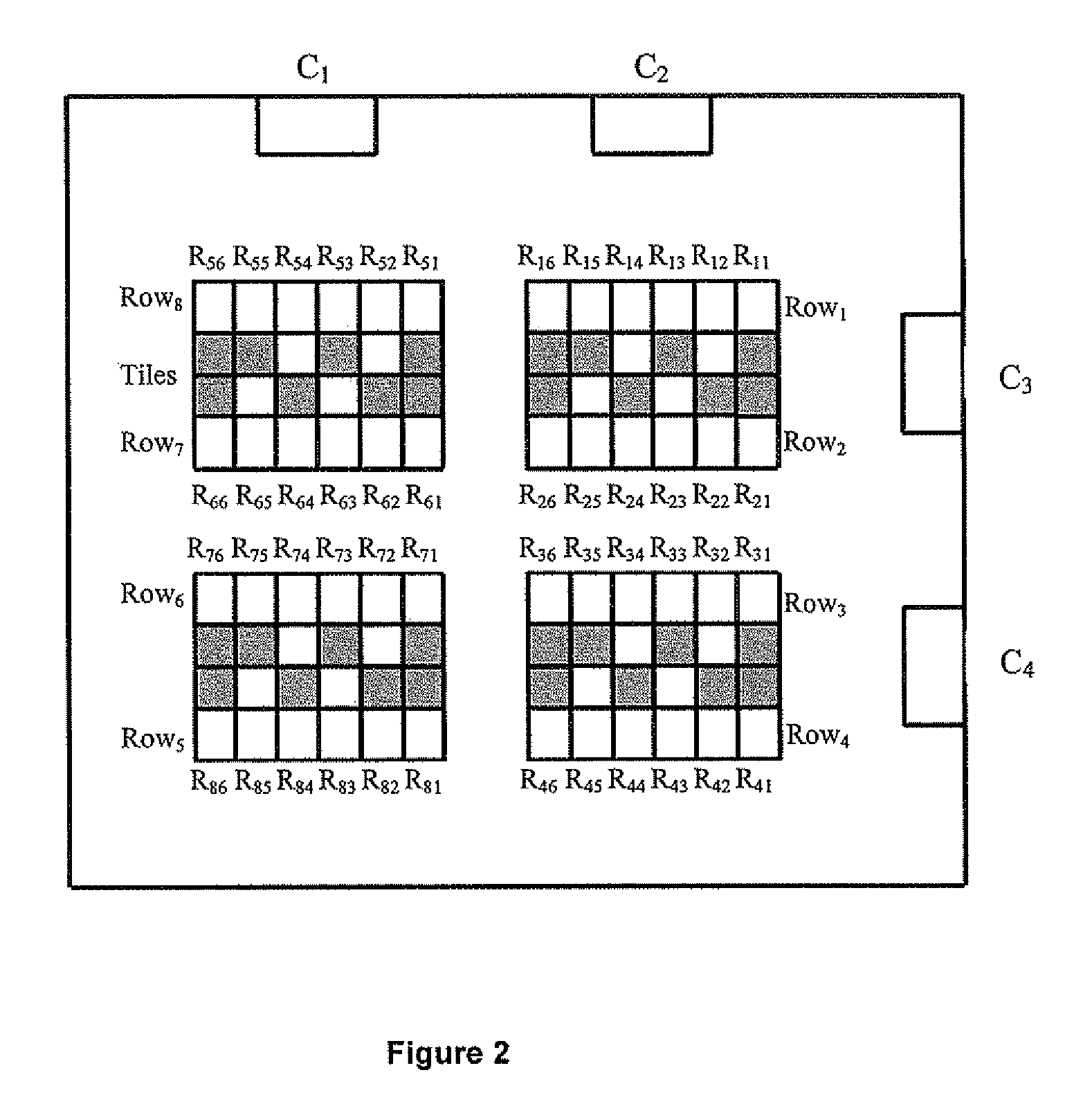Method and system for thermal management by quantitative determination of cooling characteristics of data center
a data center and quantitative technology, applied in the field of quantitative determination of cooling characteristics of data centers, can solve the problems of increasing energy costs, huge energy consumption, and the power consumption of cooling equipments contributing to a major portion of the total power consumption of the data center, and achieve the effect of effective thermal management and increasing heat load
- Summary
- Abstract
- Description
- Claims
- Application Information
AI Technical Summary
Benefits of technology
Problems solved by technology
Method used
Image
Examples
Embodiment Construction
[0041]Some embodiments of this invention, illustrating all its features, will now be discussed in detail.
[0042]The words “comprising,”“having,”“containing,” and “including,” and other forms thereof, are intended to be equivalent in meaning and be open ended in that an item or items following any one of these words is not meant to be an exhaustive listing of such item or items, or meant to be limited to only the listed item or items.
[0043]It must also be noted that as used herein and in the appended claims, the singular forms “a,”“an,” and “the” include plural references unless the context clearly dictates otherwise. Although any systems and methods similar or equivalent to those described herein can be used in the practice or testing of embodiments of the present invention, the preferred, systems and methods are now described.
[0044]The disclosed embodiments are merely exemplary of the invention, which may be embodied in various forms.
[0045]The present invention enables a method and ...
PUM
 Login to View More
Login to View More Abstract
Description
Claims
Application Information
 Login to View More
Login to View More - R&D
- Intellectual Property
- Life Sciences
- Materials
- Tech Scout
- Unparalleled Data Quality
- Higher Quality Content
- 60% Fewer Hallucinations
Browse by: Latest US Patents, China's latest patents, Technical Efficacy Thesaurus, Application Domain, Technology Topic, Popular Technical Reports.
© 2025 PatSnap. All rights reserved.Legal|Privacy policy|Modern Slavery Act Transparency Statement|Sitemap|About US| Contact US: help@patsnap.com



